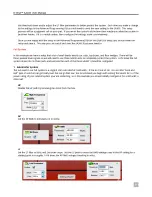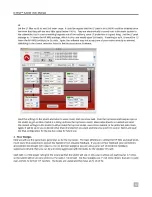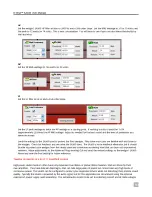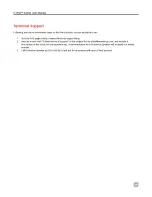
23
D-fend™ SA300 User Manual
LF
Set the LF filter to 85 Hz and 2nd order slope. It could be argued that the LF path in this SA300 could be disabled since
we know that they will see very little signal below 100 Hz. They are electronically crossed over in the main system to
the subwoofer, but in case something happens out of the ordinary, some LF protection is a good thing. Set the LF peak
wattage to 1.4 times the AP RMS wattage, which in this case would equal 360 watts. If working in volts, it would be 1.2
times the AP RMS threshold, or 38 volts. Again, the software may not accept one of your entries exactly as entered,
defaulting to the closest selection found in the microprocessor firmware.
Send the settings to the SA300 and listen to some music that you know well. Push the top boxes and keep an eye on
the SA300 to get an idea of what it is doing and how the top boxes sound. Make adjustments as needed and send
the revised settings to the SA300 to either make the top box louder, sound more natural, or be protected even more.
Again, it will be up to you to decide what level of protection you want and how you want it to sound. Name and save
the final configuration for the top box setup for future use.
3. Floor Wedges
Here we will use the same basic game plan as for the top boxes. The main difference is setting the HP RMS and peak levels
much lower than expected to protect the tweeters from dreaded feedback. If you do not fear feedback (your performers
are experienced enough not to place a mic on the floor wedge or you are using some sort of electronic feedback
suppression device) then you can be a bit more aggressive with the levels for the wedges’ HF path.
Start with ¼ of the power rating for the total load that the SA300 will see. In this case it will be 600 watt load at 2.7 ohms,
so the SA300 will be set up to protect a 150 watt 2.7 ohm load. The floor wedges use 1” exit comp drivers that are crossed
over at 2500 Hz to their 10” woofers. The boxes are sealed and they have an F3 of 85 Hz.





































